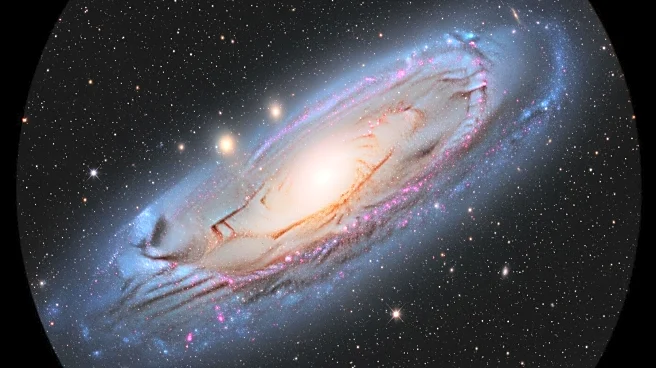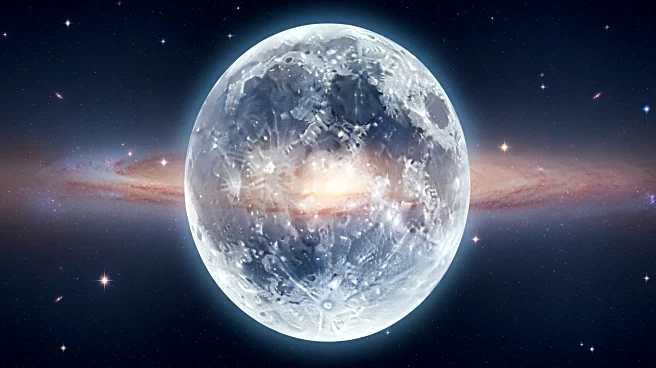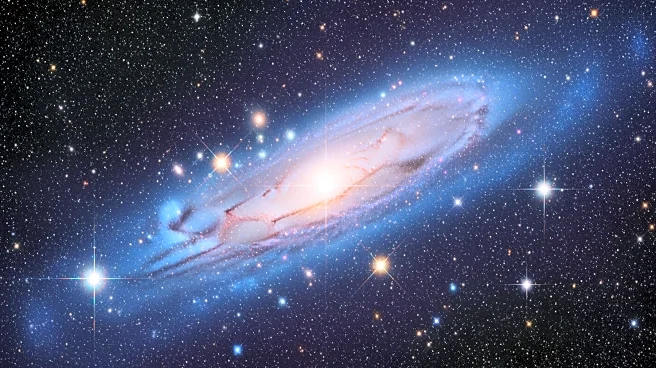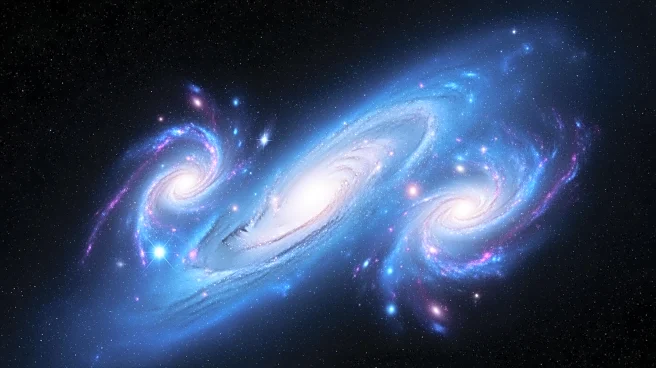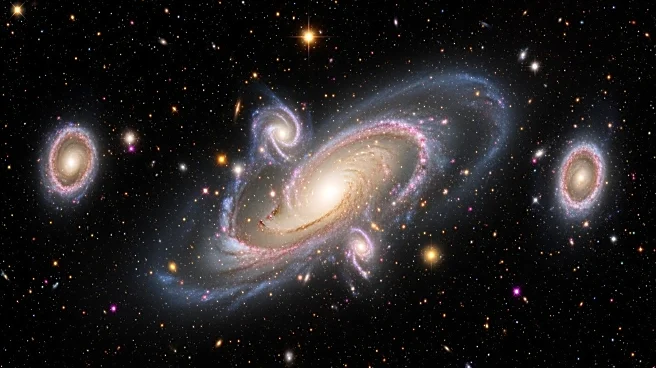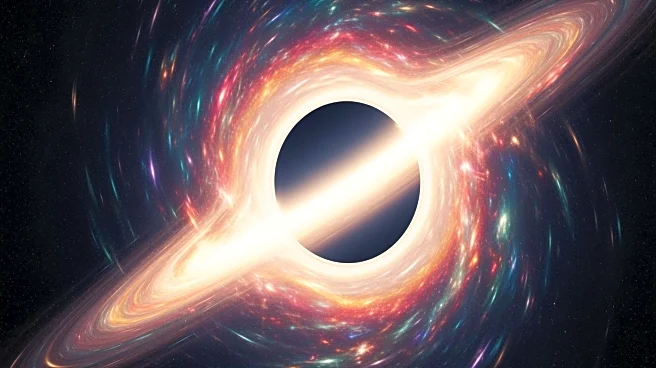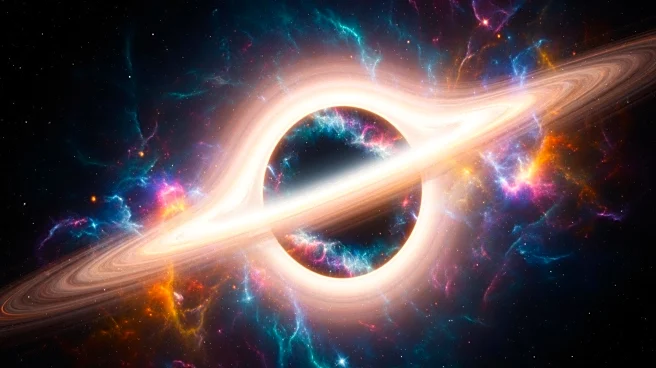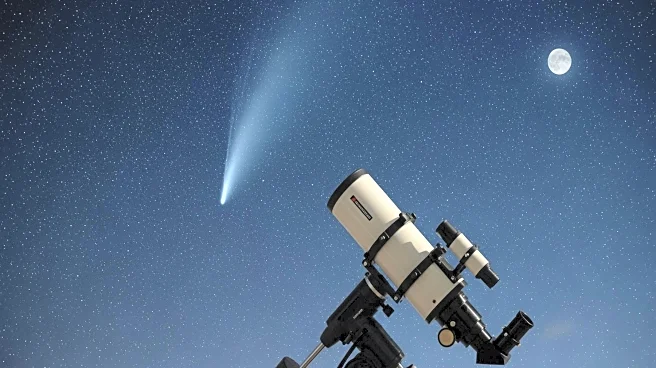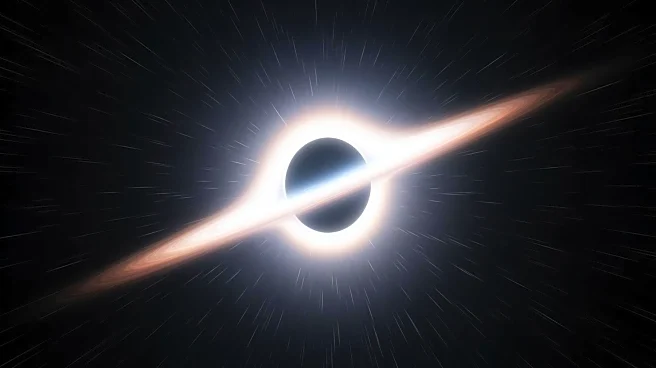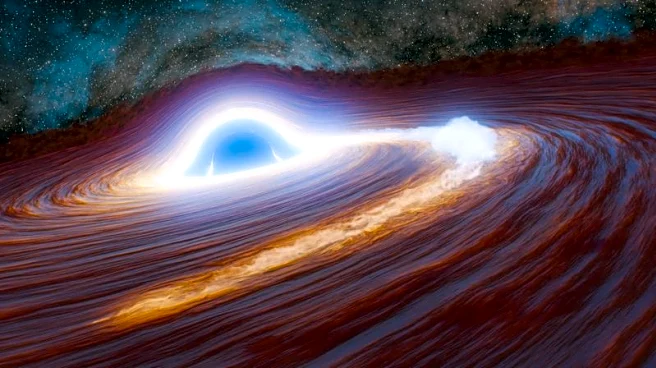What's Happening?
Astronomers have utilized the James Webb Space Telescope to study 213 star-forming galaxies from the early universe, revealing that these galaxies were far more turbulent than the orderly disk galaxies observed today. The study, led by Lola Danhaive from the University
of Cambridge, found that these early galaxies had messy, puffed-up disks, with turbulence dominating over rotation in more than 50% of the cases. This research provides insights into the formation processes of galaxies, showing a transition from chaotic beginnings to the more stable, rotating disks seen in the present universe.
Why It's Important?
This discovery is significant as it fills a gap in understanding the evolution of galaxies from their chaotic early stages to the structured forms observed today. The findings suggest that the processes of star formation, such as stellar winds and supernovae, contribute to the turbulence in early galaxies. This research enhances the understanding of galaxy formation and evolution, providing a clearer picture of how galaxies like the Milky Way came to be. It also highlights the capabilities of the James Webb Space Telescope in exploring the early universe.
What's Next?
Future research will combine observations from the James Webb Space Telescope with data from the Atacama Large Millimeter/Submillimeter Array to further study the assembly of the first galaxies. This will help astronomers understand the transition from turbulent systems to stable, rotating disks, offering deeper insights into the processes that shaped the universe.
